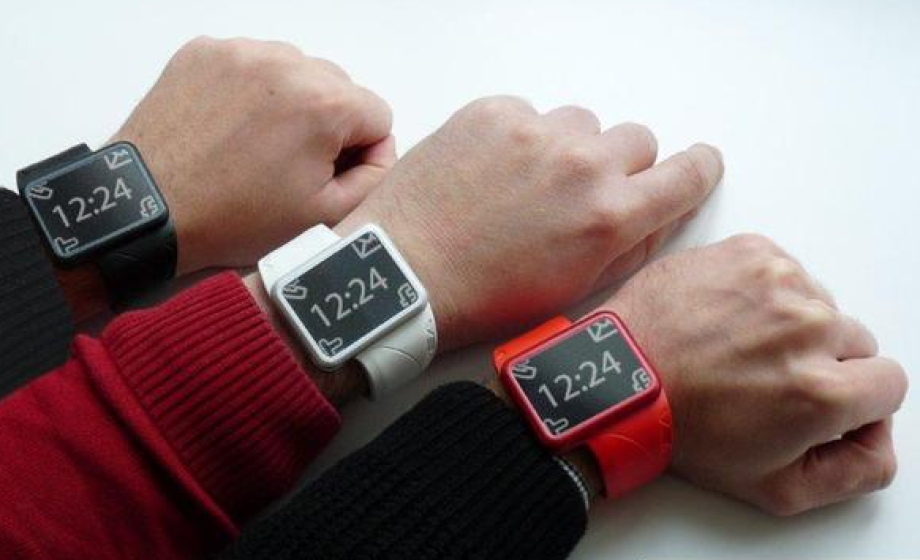
Just last December, Indiegogo announced its international launch, adding euros and pound sterling to the currencies that it would accept, and while it didn’t seems like a big change, it only took a few months for the first breakout French hardware project to pop up. The Marseille-based VEA Buddy bluetooth watch has already garnered $78K of its $320K with over a month to go in its campaign, and it’s quite easy to see how having an international platform behind them garners attention: the comments and funders are coming from all over the US, France & beyond.
The ability for a non-US campaign to get this level of funding has only been made possible with recent barrier-reductions like Indiegogo’s recent partnership with Adyen which allows them to accept local payment currencies. While local competitors across Europe are banding together to reach critical mass, they may be missing out on the key metric – audience – which Indiegogo comes preloaded with in Europe.
Indiegogo vs. KickStarter – Data vs. Curation
I sat down with CEO Danae Ringelmann at London Web Summit earlier this month to talk about the platform’s arrival in Europe. One of the first questions I had for her, of course, was “What’s the difference between Kickstarter and Indiegogo?” I was sure she got this all the time, but I really couldn’t tell you the difference (other than that Kickstarter’s campaigns make headlines more often), and the difference became clear – Data vs. Curation.
Indiegogo allows any person to upload any campaign they want to the platform – they will never tell you “no” (though they may remind you, say, uploading a photo increases your likelihood of being funded by X%). Kickstarter curates which campaigns come through, and essentially does PR for its campaigns – hence you’re always hearing about them. They tip off journalists about up-and-coming projects – something Danae said journalists get angry at Indiegogo for “why can’t you tell me which campaigns will be big before they get big!?” – Indiegogo crunches data in a Google-like style, bringing the campaigns with the most activity/engagement/support to the top (regardless of funding goal and % raised so far), while Kickstarter’s Apple-like application system curates its walled garden and plucks the thorns and weeds it doesn’t like.
Danae had a few examples of rejected KickStarter campaigns that go to Indiegogo and succeed – proof that data and ‘open’ will always overcome curation.
The Future of Crowdfunding Campaigns – Hardware Pricepoint testing
While Danae stressed that crowdfunding is not just for hardware, there have been some interesting advantages for hardware startups, which have led to VCs encouraging their hardware startups to do a crowdfunding campaign. The ability to test a product pricepoint via. varying Perks and Pricepoints (a feature Indiegogo created which was then adopted by Kickstarter) mean that you can test how much people are willing to pay, what style/color is wanted more, etc.
You can see this on the VEA Buddy campaign, where they offered a 99$ Early Adopter perk to 200 people – Sold Out. They then pushed a 150$ Black watch option and a 160$ White watch option, with respectively 209 and 32 claimed. This may mean that people like black more, or that they are indifferent to color and thus choose the cheaper option. I wouldn’t be surprised to see them introduce a new perk in the last month at a lower price point, as there is clearly a gap between the 99$ interest and the 150$; however, if the profit margin on 99$ isn’t enough, they may learn very early on that the product they are making isn’t worth enough to consumers to pay what they want people to pay for it.
I, for one, am happy to see a Pebble alternative, given all the problems Pebble has had in the past few weeks with bad press. While the VEA Buddy hasn’t quite made their campaign goal, their pricepoints line up well with Pebble’s, and I think people will be willing to get their hands on one early on!
More interestingly will be to see if startups like Aedle or Invoxia (AudiOffice) will take their products to Indiegogo to test price points – Aedle cofounder told me they sold out of their pre-orders at a 300€+ price-point – maybe they could learn more about what users want and are willing to pay by creating a sweet headphone campaign.

